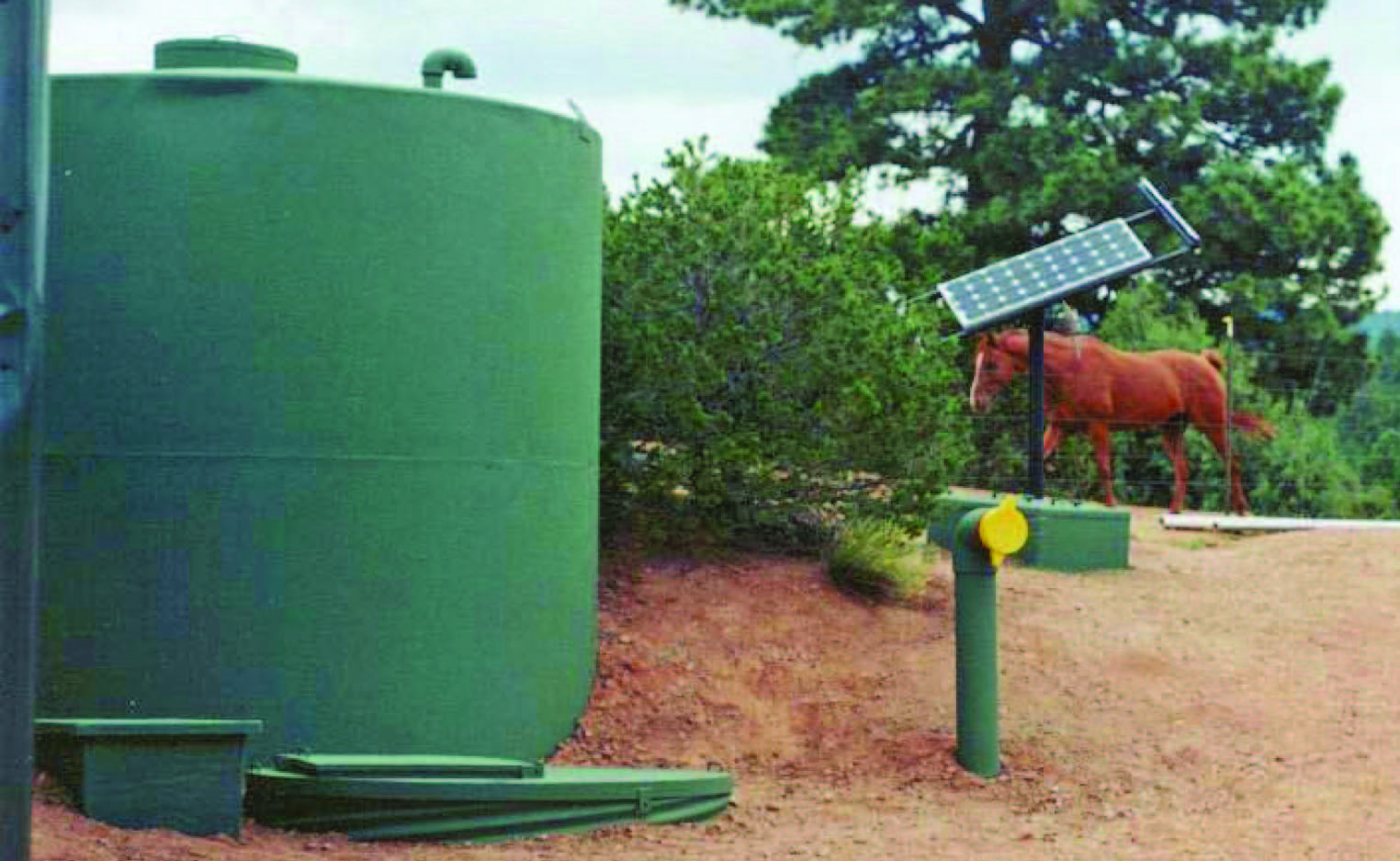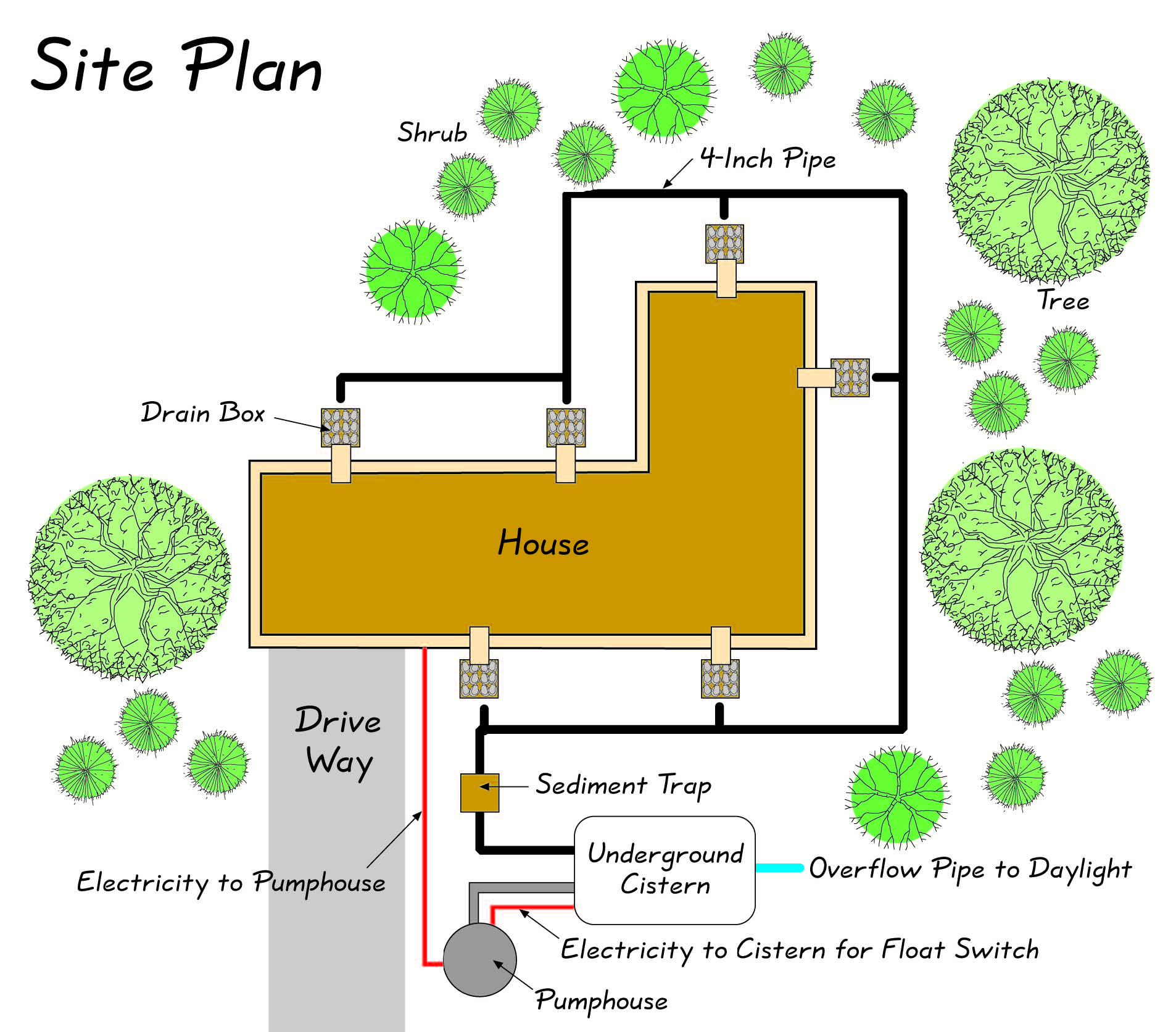The PermaDesign Weblog, with Nate Downey and Melissa McDonald!
Roof-Reliant Landscaping™ Step 9: From Rainbarrel to Cisterns

As the storage capacity of rainwater harvesting systems grows, their complexity and cost also grow. In modest systems, storage tanks can consist of rainbarrels that can be purchased at retail stores and landscape supply outlets. When simple rainbarrels do not provide adequate water storage, rainbarrels can be connected together with pipes to provide more storage capacity. In more ambitious systems, larger tanks designed for water storage can be purchased and delivered onsite. Sometimes storage tanks are built onsite to precise specifications.
For the most part, this manual concentrates on larger rainwater harvesting systems that include large aboveground or below-ground cisterns. Because of their size and scope, these larger cistern systems require detailed planning, careful design of the cistern system as well as the finished landscape, skilled labor to assist with installation, and compliance with any local building codes and applicable regulations. All of these steps must proceed in a logical order to ensure the success and the cost-efficiency of the project. Mistakes can be costly, dangerous and wasteful, but the benefits of a well-designed system are enormous.
The figure below shows a design overview of a large roofreliant underground cistern system. Water is harvested off of the roof via canales, which feed water into inground drain boxes. Branching off and away from the house is the underground conveyance piping leading to an underground cistern. Also shown are a sediment trap, pumphouse, a buried conduit line running electricity for the cistern system and an overflow pipe.
In roof-reliant landscaping, water travels through the cistern system, and given a thoughtful plan, a successful installation and occasional maintenance, this water can help establish an oasis in any desert.

“Overflow” refers to the discharge of water that pours out of a cistern whenever the tank is full and a precipitation event is occurring. Legally, every cistern system needs to control this kind of runoff, such that the overflow pipe never increases the level of water and/or sediment that runs off of your property. This runoff, if properly controlled, provides an additional benefit due to an increased quantity of water directed toward newly planted, recently established, or existing native plant material.
09/25/2015 | (0) Comments










Comments